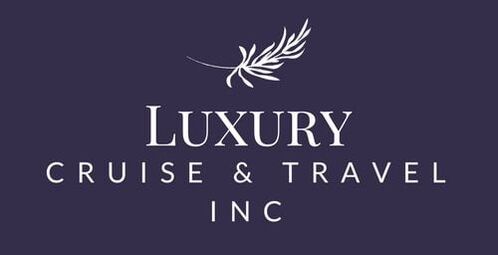|
Explore Cologne, Germany, as you sail through history. One of the oldest cities in Germany, and currently the 4th largest, Cologne, has been drawing visitors since 50 A.D., when it was officially founded. As your cruise ship docks Cologne Cathedral, a UNESCO world heritage site, is already visible soaring above the city skyline. From ruins uncovered after World War II, there is evidence of a Christian church in this location as early as the 4th century. The plans were drawn, and the foundation laid for the current cathedral in1248. Six hundred years later it was completed. Built in sections so that the cathedral could be used, by 1560 about 90% of the total planned building had a roof, including temporary roofs over the nave and transept. In 1842, with growing romantic enthusiasm for the middle ages coupled with the financial support of the Prussian Court after a gap of almost 300 years construction resumed on the transept portion of the cathedral. Completed by 1880, for four years it had the distinction of being the world’s tallest building. Inside the cathedral, enshrined in an elaborately carved ornamental gold tomb are the purported remains of the Three Wise Men, The centerpiece of this amazing cathedral, the relics were given to the Archbishop of Cologne in 1164 by the Holy Roman Emperor Fredrick Barbarossa. Built in both the Gothic and neo gothic styles, this gem attracts over 20,000 visitors a year. Free to visit, summer hours are from 6am until 10pm. A separate admission applies for the treasury, full of golden icons from the churches history, and the tower, with its bird’s eye view of the city. Guided tours are available 10am to 2:30 Monday through Saturday in English for 7 euro. http://www.colognecathedral.net/History-of-Cologne-Cathedral.html Outside the cathedral, melodies ring out from street performers and various characters, some spray-painted head to toe, others in authentic period costumes, beckon you over to take photos with them, for a fee. During the war over 72% of the city was destroyed, reducing the historic section to rubble. Rebuilt in the original style, a stroll along the cobblestone streets, through the old town, reveals many charming multi-hued buildings. Most were constructed with storage spaces above and the lower floors were devoted to shops. Today many of the buildings have been converted into pubs, restaurants and shops. Numbers prominently displayed on the buildings face indicate the year of construction and not the address. Addresses historically featured images of the owner’s occupation, rather than numbers. Today you can still see a whale prominently displayed, on the side of the building where a whaler once lived. Famous for Koelnischwasser, or eau de Cologne, fragrance has been produced here since 1709. Used liberally by Napoleon, in a time when bathing was uncommon, you can take home a bottle as a souvenir Primarily a modern city, Cologne has a long and storied past. The Cologne Cathedral, while struck 14 times during Allied bombing, was one of the one of few buildings left standing after World War II. And was completely reconstructed by 1965. Perfect for a short stop on a relaxing river cruise, enjoy the modern vibe of this historic marvel.
0 Comments
Soak up the scenery in Rudesheim, Germany and the castle district. A visit to Rudesheim is your next stop on a relaxing river cruise. It lies at the foot of the Niederwald Mountains on the Rhine’s east bank, near the Lorelei Mountains. The town belongs to the Frankfurt Rhine Main Region and is one of Germany’s biggest tourist attractions. Only Cologne Cathedral draws more tourists. With an average of 300,000 visitors a year, try exploring this gem in the spring or fall when the charming hamlet is less crowded. Rudesheim is a picture perfect community, with tiny winding streets and ample shopping opportunities. Winter brings the Rudesheim Christmas market. Home of Europe’s biggest nativity scene, ogle life sized figures on display on the market square. If you need a little Christmas off-season, browse through Katie Wolfhard’s Christmas shop. Soar in a chairlift up to the Niederwald statue. Built in 1883, the statue commemorates Germanys unification 12 years prior. Your reward is a spectacular bird’s eye view of the town and the distant Rhine with its slopping hills awash in vineyards. You have to hear, and see Siegfried’s Mechanical Musical Instrument Museum. Tour one of the world’s biggest collections of self-playing musical instruments. Enormous calliope’s look like they came straight from the circus. Their figurines pivot, instruments magically play themselves, and carousels spin, still delivering spellbinding magic. In the over 350 exhibits, melodies tinkle from the ivories, drums boom, and violins spin to provide a melodic glimpse into the musical past. Guided tours are available in 9 languages and the museum tour with music takes approx. 45 minutes. Fresh and hot, try a baumstreizel, the local dessert. Resembling a paint roller, this hollow tube shaped pastry is made from traditional yeast dough. Rolled around a wooden roller, the dough is rotated slowly over a heat source, and brushed with butter as it cooks. It is finished with another brush of butter and rolled in nuts, cinnamon, chocolate or sprinkles. Yum. Sample the local drink Rudesheim Coffee. Served in a specially made coffee set this concoction is a mix of locally Brandy, coffee whipped cream and chocolate shavings. It will definitely warm you up on a cold winter’s day. Known for quality Riesling grapes, this area accounts for 2.5% of Germanys wine production, with over 80,000 acres in cultivation. Another locally produced item, Asbach Uralt Brandy, is featured prominently in Rudesheim coffee. As you depart from Rusedheim and slowly cruise toward Cologne castles dot the landscape. This area is a UNESCO world heritage site, and part of the Rheine Middle region. On towering hills along the river fifteen castles perch along the bluffs.
|
Linda Carter
|
Managed by Voyager Websites
 RSS Feed
RSS Feed
